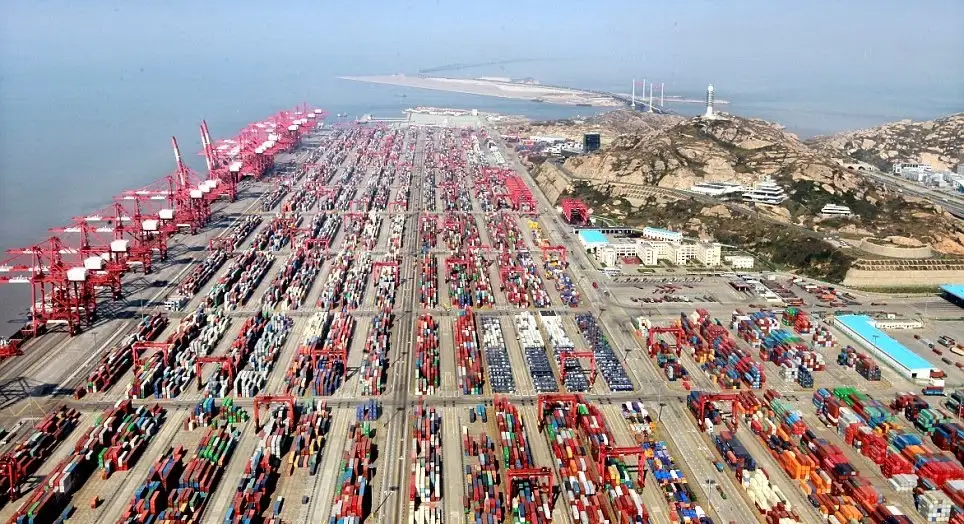
The Top Ten of the ports for its global container movement
The Top Ten of the ports for its global container movement

The top 10 of the world's largest container traffic ports. Nine of the world's first ten container ports are Asian (Photo Blog Engineering worldwide, study published by the Journal of Naval Engineering)
Overall, Asia leads the volume of container movement worldwide in 2015 with 72% within the world's first 50 ports. European ports have a market share of 13.2%, America with 9.6% and the Middle East with 5.25%. The list of the top ten is as follows:
1.Shanghai, China
The port of Shanghai, with hundreds of years of history, has container terminals located in the areas of Yangon, Waigaoqiao and Wusong, covering more than 13 km of dock length, with 156 port cranes and a total area for containers of 6,730,000 m2. Shanghai has moved 36.54 Mteu this past year, 3.5% more than in 2014. This growth has been slower than that of the previous year, of 5%.
2. Singapore, Singapore
The port of Singapore became the largest port in the world. From Singapore's economic perspective, the port plays a very important role as it supplies the re-export market on a huge scale. This infrastructure is connected to more than 600 ports spread over 100 countries. As for its operation, the port is responsible for the transit of almost 50% of the world's crude.
3. Shenzhen, China
The port of Shenzhen includes a set of ports on the Shenzhen coast in the Chinese province of Guangdong. In total, it has a capacity of 140. The total imports and exports in the province have fallen by 3.9% in 2015.
4. Ningbo- Zhoushan (China)
This port, located in the south-east of China, is composed of the union between the port of Ningbo and the port of Zhoushan that was held in 2006. Both ports have a long history and were always important infrastructure for Chinese foreign trade. The first of them is the second most important deep-water port behind the port of Shanghai. There has been a 6.1% growth in 2015, exceeding the 20 Mteu annual barrier for the first time.
5. Hong Kong, China
The Chinese port of Hong Kong is located in the South Chinese Sea. It is a deep-sea port dominated by trade in products manufactured by transport in containers. It is one of the most active ports in the world in terms of cargo and passenger transport. In 2015 it has moved 20.07 Mteu, 9.7% less than the previous year.
6. Busan (South Korea)
Busan is the largest port in South Korea, and has been operating since 1876. It is currently trading with 500 ports in 100 countries around the world. In 2015 it drove up to 19.45 Mteu, 4% more than in 2014. It maintains its position as the sixth most active port, although its goal is to reach second position in the world ranking by 2020.
7. Guangzhou, China
The port of Canton is the main seaport of the city of Canton, and the largest port in southern China. Its maritime trade reaches over 300 ports from countries around the world. It was previously an important port as it worked as a point of origin for the Silk Route. The container traffic last year was 17.22 Mteu, 5% more than the previous year.
8. Qingdao (China)
Next to the Yellow Sea and located on the Shandong Peninsula, the port of Shandong occupies the seventh place. In front of Japan and South Korea, world shipbuilding leaders, the port of Quigdao has connectivity to more than 450 ports in more than 130 countries, and is the most important in northern China. It is a port that is your data in automation and e-commerce online with point ports like Singapore.
9. Jebel Ali, Dubai (E.A.U)
This port operated 61.7 Mteu in 2015, however, has a traffic capacity of up to 79.6 Mteu and is expected to increase to 100 Mteu by 2020. It currently has 23 docking points and 78 cranes.
10. Tianjin, China
It is the largest port in northern China. It deals with 600 ports from all over the world, having managed last year about 14.11 Mteu, slightly higher than the year 2014. The projection was a growth volume of 7%, but was affected by explosions during the year and the resulting impact on traffic.
© 2024 Nautica Digital Europe - www.nauticadigital.eu











